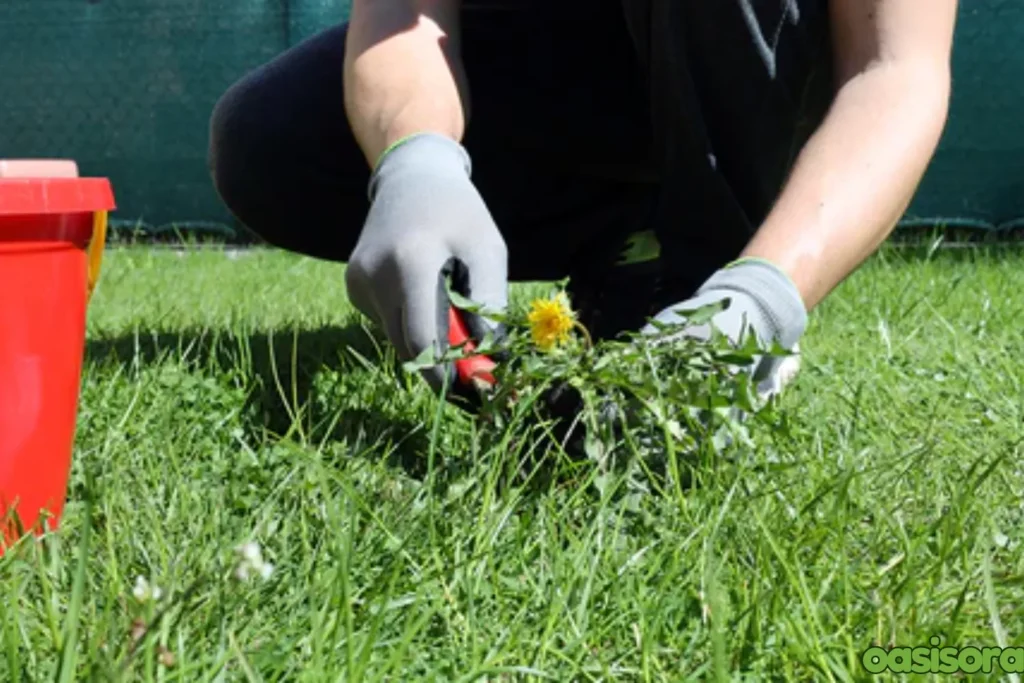
Weeds are unwanted plants stealing your plants of food, water, and sunshine. This makes it harder for your yard to grow well. You can keep your landscape looking nice and healthy by using the right techniques to greatly slow their growth.
In this article, we will discuss 10 effective tips for a weed-free landscape to keep your yard free of invasive species.
Why Weeds Are a Persistent Problem in Your Landscape?
Weeds are very hardy plants. They wait for the proper circumstances to grow for months or even years. Once they grow, they start to fight with your plants for resources such as water, nutrients, and sunlight.
Left unmanaged, they can swiftly overrun your yard and rob your garden beauty. Thus, controlling them as early as practicable is vital.
1. Start with Quality Weed-Free Soil
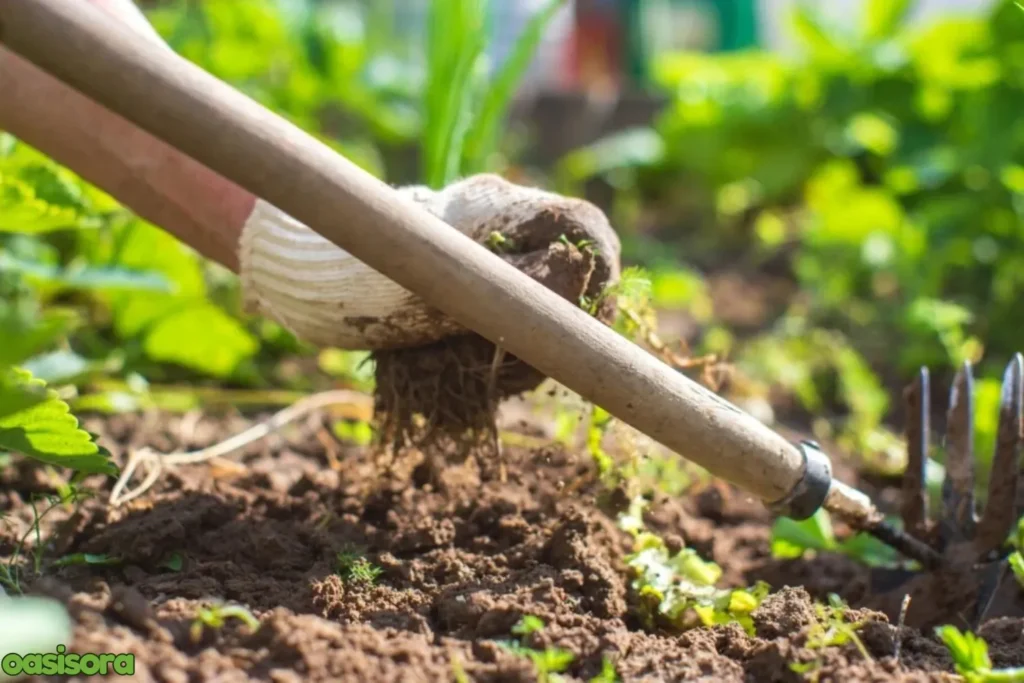
Quality weed free soil
The soil is the foundation of a weed-free landscape. Therefore, always check your soil before planting, if there is any existing wild growth or if it is clear. Their seeds will grow quickly and take over your yard if they are already in the soil.
Thus, you must start with fresh and high-quality soil that is free from them and rich in nutrients because healthy and well-prepared soil makes it harder for Invasive plants to grow. Here is what you can do:
- Check the soil before planting to remove any existing weed roots.
- Adding organic compost and natural fertilizers will also be good for soil health.
- Prevent their seeds from growing by using pre-emergent herbicides.
2. Mulch Your Garden to Block Weed Growth
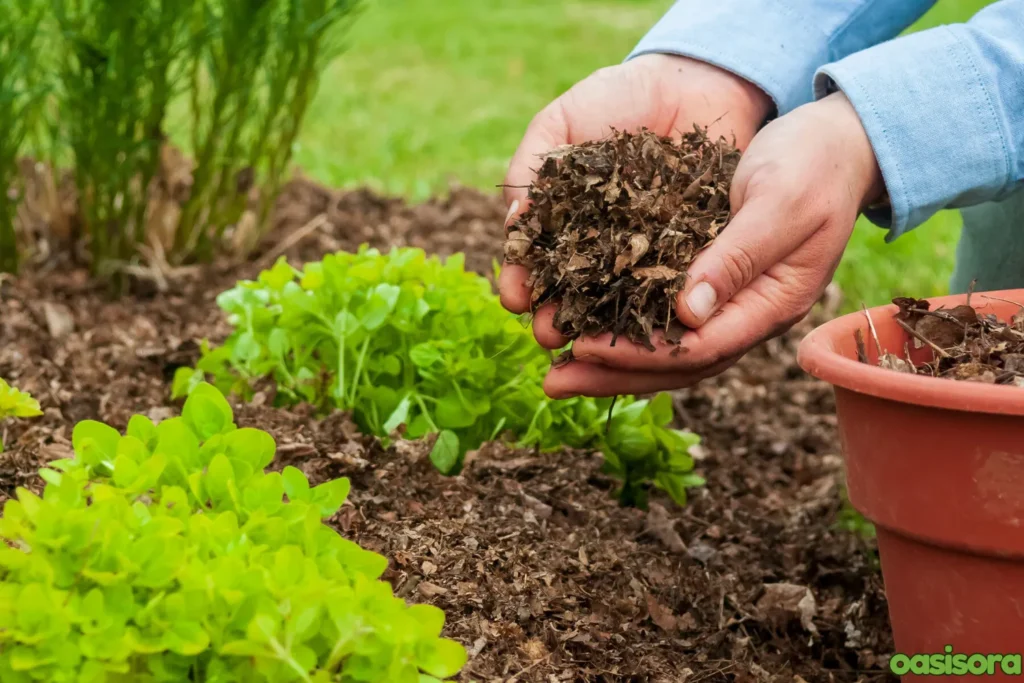
Mulch to make gardren weed free
One of the best tips for a weed-free landscape is to use mulch to block sunlight and stop it from sprouting. It covers the soil and stops sunshine from reaching their seeds, which stops them from growing. Remember, don’t put more than 2 to 4 inches of mulch because its excessive amount is not good for your plant’s health.
You will get effective results if you spread them around plants and garden beds. Plus, don’t put mulch too close to the roots of plants, as this can cause them to rot. Mulch comes in two varieties:
- The most commonly used type is organic mulch. It includes components like wood chips, leaves, and straw. Over time, it decomposes and enriches the soil.
- Synthetic mulch is made of plastic sheeting or landscape fabric. Its main quality is that it lasts longer and provides a strong barrier against Invasive plants.
3. Water Smartly to Starve Weeds
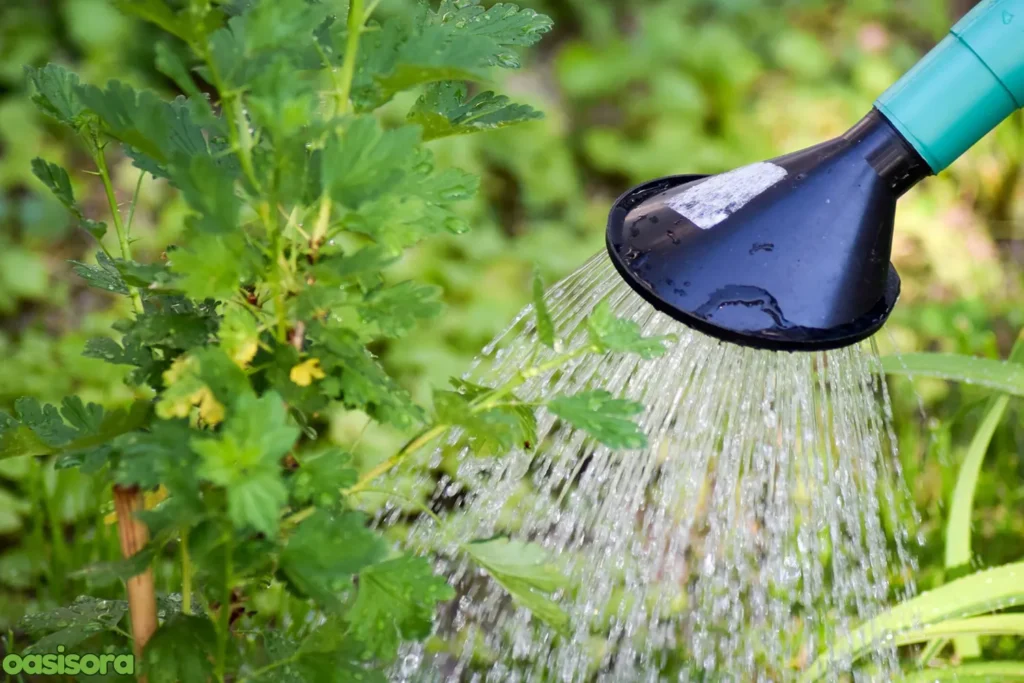
Smart watering to strave weeds
For a long-term solution, one of the best tips for a weed-free landscape is watering your garden accurately. Unwanted plants can grow less quickly if you water your plants sufficiently. It is important to use the right watering methods because they can grow best when the ground is evenly wet. To reduce their growth, do the following:
- Use drip irrigation or soak tubes to water only the roots of plants rather than the top of the soil.
- To give the plants time to absorb the water before the sun dries out the soil, water in the morning.
- Do not use high sprinklers because they spread water around and help the plants to grow.
4. Plant Ground Cover or Cover Crops
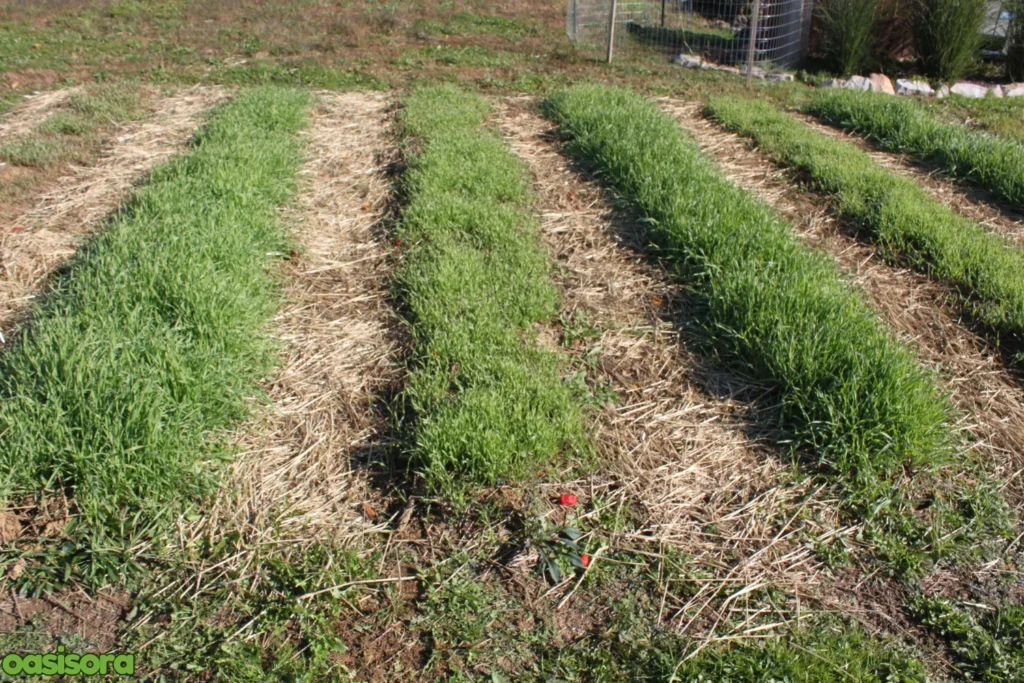
Plant Ground Cover
Nuisance plants can’t grow where ground cover plants are because they take up space and block sunshine. These plants help make a natural wall and fill in empty spots where weeds could grow. In addition to keeping them away, planting ground cover or cover crops is good for the land. Some great choices are:
- Creeping thyme, periwinkle, and clover are great plants for flower gardens to manage weeds.
- In food gardens, bare soil can be covered in the off-season with plants such as ryegrass, buckwheat, and clover.
5. Remove Weeds at the Root
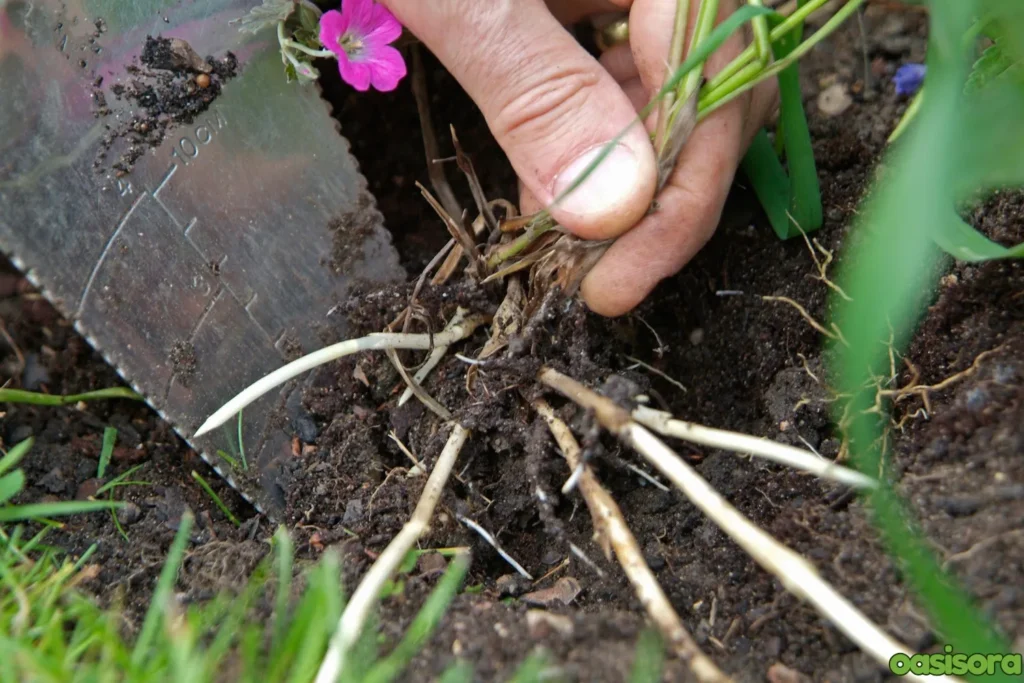
Removing wild growth at the root
Removing wild growth at the root is one of the most effective tips for a weed-free landscape, as it prevents regrowth. The best way to do it pull them out by hand. Because cutting off the tops won’t help; they can regrow.
They won’t grow back in other parts of your yard if you get rid of them the right way. Here’s how to do it properly:
- Dig deep and pull weeds out by their roots with a gardening tool, fork, or hoe.
- Remove nuisance plants after rain when the soil is soft, making it easier to pull them out completely.
6. Don’t Let Weeds Go to Seed
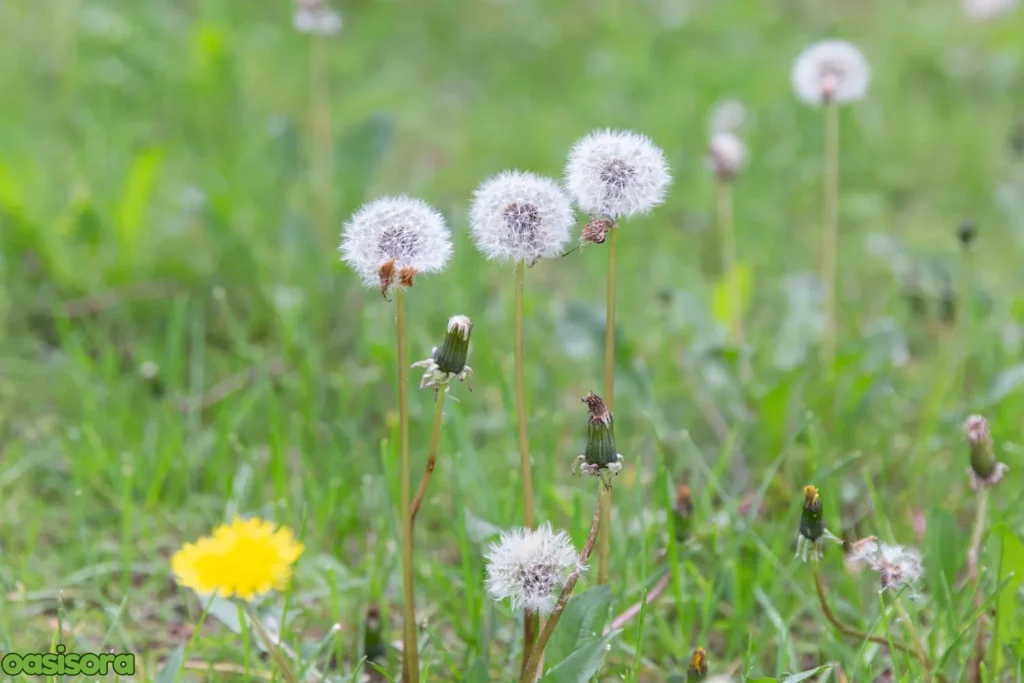
Weeds Go to Seed
The number of unwanted plants will grow quickly if you let them flower and spread their seeds. A single weed can produce thousands of seeds that can stay in the soil for years. To prevent this:
- Remove them before they flower and produce seeds.
- Regularly check your garden for any new wild growth.
- Using mulch or ground cover will make it less likely for new invasive plants to grow.
7. Use Natural Weed Control Methods
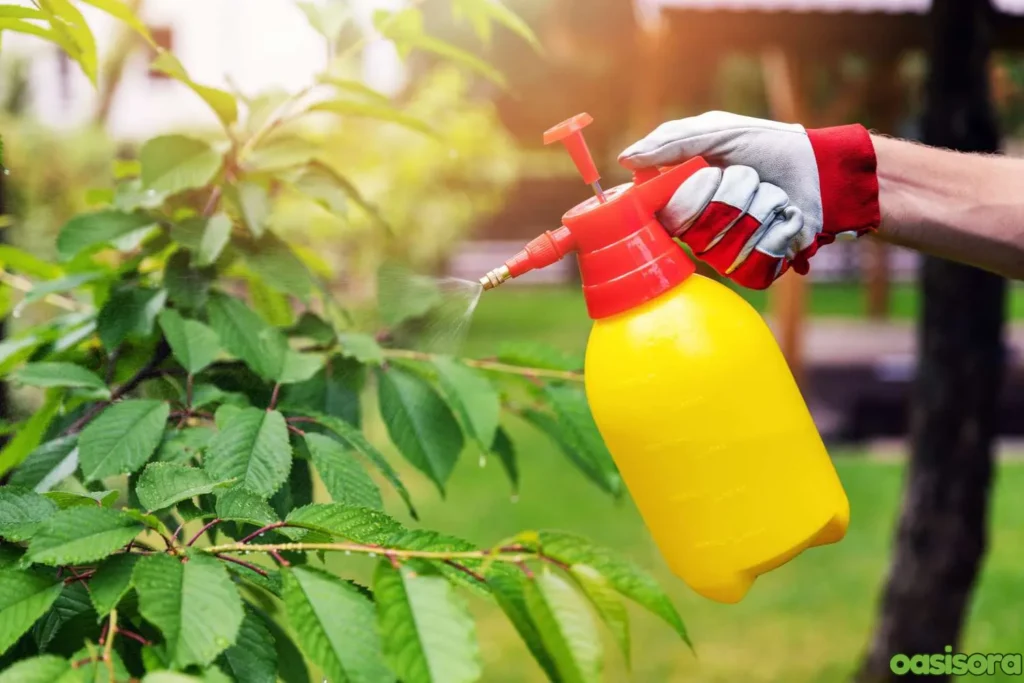
Natural Weed Control
If pulling unwelcome plants manually is not enough, try other tips for a weed-free landscape. You can try natural weed killers instead of harsh chemicals. They are safer for the environment and your plants. Some effective options include:
- Mix 1 gallon of vinegar with 1 ounce of dish soap to make a spray that you can them on a sunny day.
- Pouring hot water on undesirable plants kills them right away.
- Sprinkling salt at the base of these types of plants can dry them out, but be careful not to damage surrounding plants.
8. Add a Barrier to Protect Garden Beds
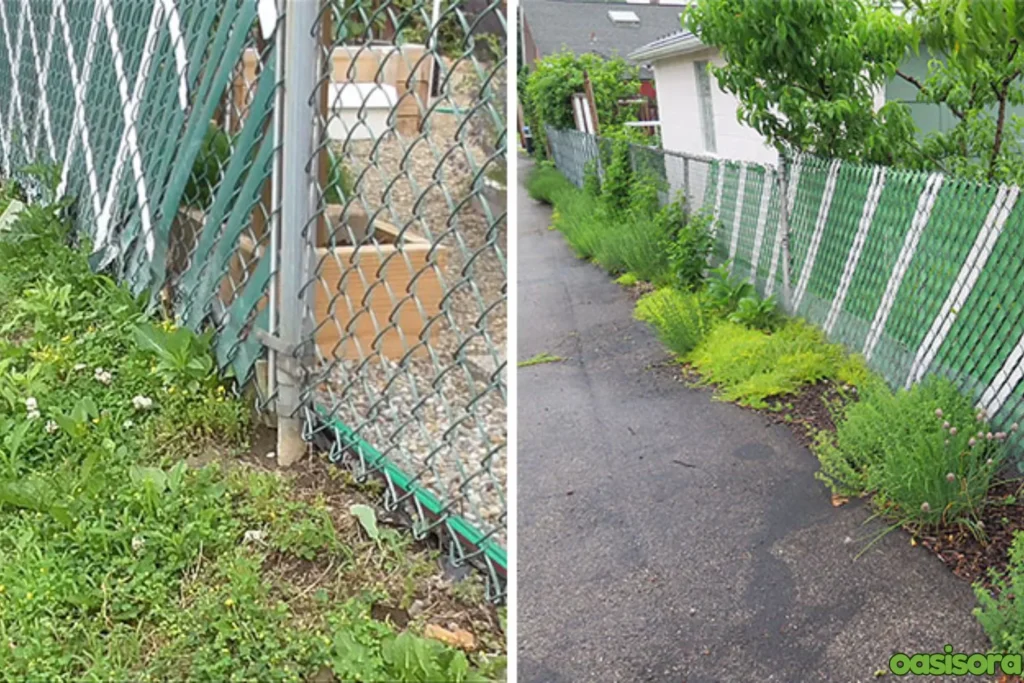
Barrier to Protect Garden Beds
To keep invasive plants from growing in flower beds, you can set up barriers. They can’t get through if the shields are properly overlapping and fastened. Some options include:
- To keep weeds out while still letting water and air through, put landscape cloth under mulch or gravel.
- Cardboard or newspaper is an inexpensive option that keeps them down and slowly adds organic matter to the soil.
- If you don’t want to grow plants, plastic sheeting is best for places like walkways and driveways.
9. Keep Bare Soil Covered at All Times
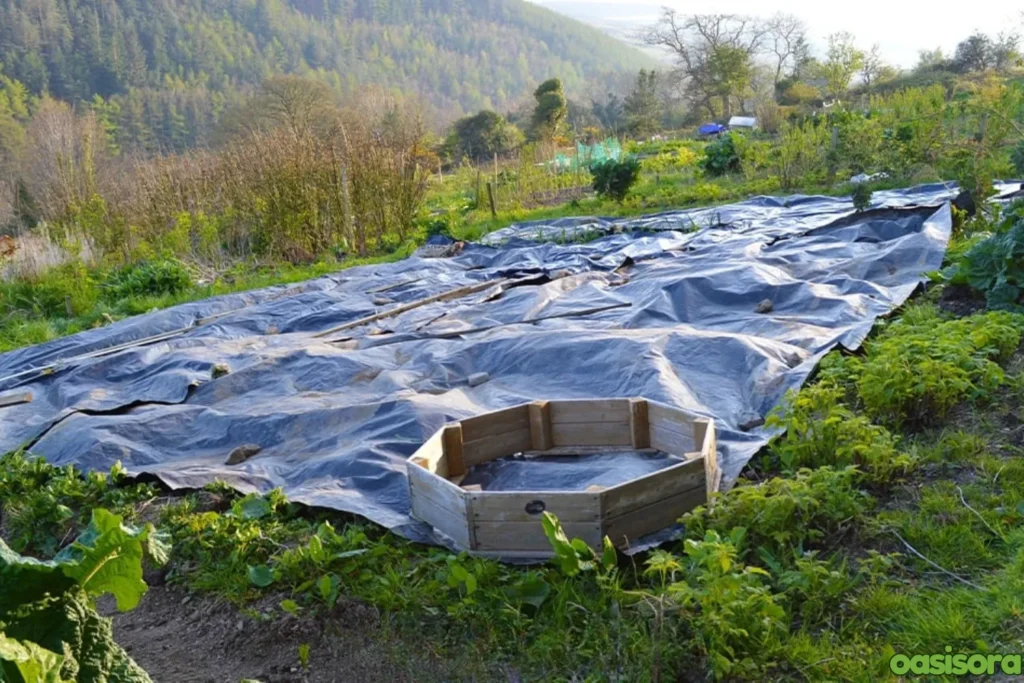
Bare Soil Covered for a Weed-Free Landscape
Among the best tips for a Weed-Free Landscape is to keep covering the bare soil. Undoubtedly, bare soil is an open invitation for wild growth. You can do the following to prevent their seeds from sprouting:
- Cover the ground with grass, ground-cover plants, or cover crops.
- You can also cover the soil with cardboard, newspaper, or plastic if you are not going to plant right away.
- Plant veggies near to one another so that weeds lack space to grow.
10. Create a Regular Weed Maintenance Routine

Weed Maintenance
Creating a regular gardening maintenance routine is ideal for removing unwanted plants. If you do work with consistency, it keeps your landscape weed-free. The best times to control their growth are early spring and late summer, when they are most likely to spread.
You just need to develop a simple routine that includes:
- Check the area once a week to find and get rid of unnecessary plant growth as soon as possible.
- To keep the barrier strong, add new mulch every couple of months.
- Seasonal weeding sessions to tackle any major growth before it spreads.
Additional Tips for Special Landscapes
There are some more tips to make your landscapes more attractive. Different types of gardens require unique unwanted plant control. You must follow these tips for a weed-free landscape according to your garden types. This makes your garden look neat and healthy all year round.
- To preserve the fragile ones, it is crucial to slowly remove undesirable plants in flower beds.
- If you have a Rock Garden, use landscape fabric under the rocks to prevent them from growing through.
- You can apply straw mulch or raised beds to minimize them for vegetable gardens.
FAQs
Do any plants have a natural ability to keep weeds away?
Yes! Because spreading thyme and clover cover the ground, they prevent the growth of nuisance plants.
How can I stop weeds from coming back once I remove them?
Remove all of the roots, fill the space, and cover with mulch to prevent regrowth.
Is it possible to kill weeds using everyday items without damaging my plants?
Dish soap, vinegar, and boiling water are acceptable to use, but exercise caution as they may harm surrounding plants.
Is a completely weed-free landscape possible to achieve?
Although it is impossible to kill every weed, they can be managed with consistent attention and smart planting.
